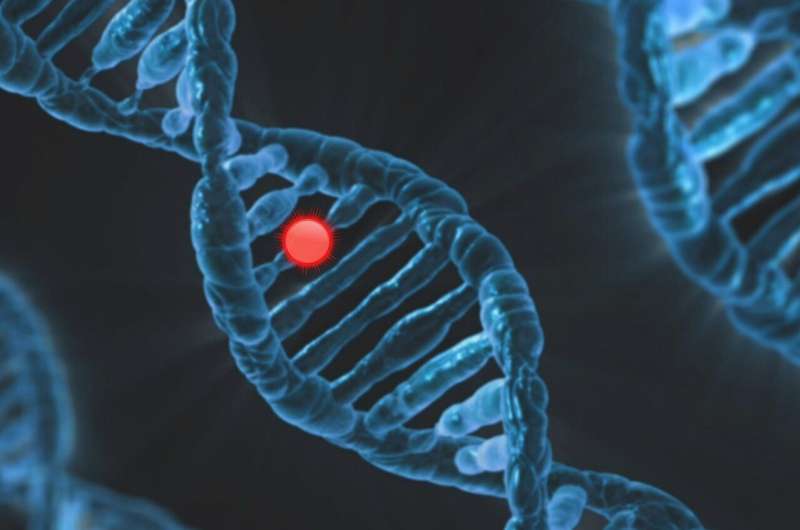Mapping 100 years of antibiotic resistance evolution to pinpoint the genetic culprits

Stephanie Baum
scientific editor

Robert Egan
associate editor

The genetic culprits responsible for the spread of multidrug resistance (MDR) in bacteria have been identified by new research mapping 100 years of bacterial evolution.
Experts at the Wellcome Sanger Institute, the University of Bath, the UK Health Security Agency (UKHSA) and their collaborators, have analyzed over 40,000 plasmids from historical and present-day bacterial samples taken across six continents, the largest dataset of its kind.
Plasmids are transferable structures in bacteria that allow different strains to share genetic information. In this study, in Science, researchers found that a minority of plasmids causes most of the multidrug resistance in the world. In the future, developing ways to target these could lead to new therapies to combat treatment-resistant infections worldwide.
Currently, treatment-resistant infections cause at least one million deaths worldwide every year, with this number expected to rise. While some bacteria and fungi carry antimicrobial resistance (AMR) genes naturally, the emergence and spread of MDR and AMR genes has been consistently linked to the use of antibiotics.
In this study, researchers were able to analyze bacterial samples from as far back as 1917, a time before the discovery of antibiotics. The team found that the ancestral plasmids that went on to become global spreaders of AMR genes did not contain resistance genes initially. They evolved to gain this resistance as the use of antibiotics grew. Their descendants, a relatively small group of modern plasmids, now confer resistance to both first-line and last-resort antibiotics, making them a huge threat to human health.
By diving into the last 100 years of bacterial history, the team also developed a model for plasmid evolution, highlighting the three distinct pathways plasmids can take.
The modern plasmids that contain MDR genes rose from two of these pathways. Either they were formed by AMR genes being inserted into an existing plasmid structure, or these plasmids were the result of fusion with another plasmid. The plasmids formed by fusion are also highly transferable between different species of bacteria.
As these plasmids are found across multiple different bacterial species, developing ways to target the AMR-carrying plasmids could lead to new therapies to combat multiple treatment-resistant infections worldwide.
Additionally, the model developed to explain the last 100 years of evolution could help predict how the next 100 years may go. This could help predict outbreaks and patterns of infectious disease and be used to inform public health strategies to stop the spread of infectious disease.
Dr. Adrian Cazares, first author at the Wellcome Sanger Institute, said, "Plasmids are key drivers of bacterial survival against antibiotics. By going back in time through unique historical collections, we reveal how plasmids adapted to the antibiotic era and the evolutionary journey that transformed a minority of them into the global multidrug-resistant vectors driving the antimicrobial resistance crisis we face today.
"Our findings show that the widespread use of antibiotics has fundamentally reshaped the genetic landscape of plasmids, and the way bacteria fight against antimicrobial treatment, and are a stark reminder that our actions have a profound and lasting impact on bacterial evolution."
Professor Zamin Iqbal, co-senior author at the Milner Centre for Evolution, University of Bath, said, "Our research combines historical and modern-day data to give a new perspective on the evolutionary lifestyles that different plasmids can have, whether this be changing slowly, completely merging with other plasmids, or disappearing and leaving genetic fragments that are then 'recycled for parts.' Through our research, we can see the impact of human antibiotic use and the shadow of other selective forces, which also challenge bacteria and their plasmids."
Dr. Sarah Alexander, UKHSA lead for the study, said, "This groundbreaking study builds on a longstanding and successful collaboration between The National Collection of Type Cultures (NCTC) and the Wellcome Sanger Institute. The generous donation of the Murray Collection to the NCTC enabled us to conserve these irreplaceable bacterial strains. DNA analysis of our strains has shown how NCTC's stringent preservation methods have ensured the bacteria have not changed since they were deposited, even over many decades.
"These exciting findings help us to better understand the origins of antimicrobial resistance and could play a role in helping us tackle the global spread of resistant infections over years to come."
Professor Nick Thomson, co-senior author at the Wellcome Sanger Institute, said, "This research builds on the rich and leading role the UK has played in the discovery and development of antibiotics for the treatment of human and animal infections. Here, we combined expertise across institutes, teaming up with the longest-running publicly owned biological archive in the world. Thanks to this, we were able to use unique historical samples to glimpse at the molecular events behind one of the most significant challenges facing us today—untreatable infections.
"By uncovering the rules of plasmid evolution, it could be possible, in the future, to develop rational approaches to target the spread of antibiotic resistance genes, the consequences of which touch all our lives at one point or another."
More information: Adrian Cazares et al, Pre and post antibiotic epoch: The historical spread of antimicrobial resistance, Science (2025). .
Journal information: Science
Provided by Wellcome Trust Sanger Institute
















